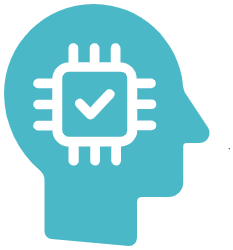Introduction
In the rapidly evolving world of artificial intelligence, two prominent methods stand out for enhancing the capabilities of large language models (LLMs): Retrieval-Augmented Generation (RAG) and fine-tuning. Both strategies offer unique advantages and applications, yet they cater to different needs within the AI community. This post delves into the core distinctions between RAG and fine-tuning, shedding light on their individual strengths and optimal use cases.
What is RAG?
Retrieval-Augmented Generation, or RAG, is a cutting-edge approach that combines the generative power of language models with the vast knowledge stored in external databases. By retrieving information from a dataset in real-time, RAG models can provide more accurate, detailed, and contextually relevant responses. This makes RAG particularly valuable for tasks requiring up-to-date information or domain-specific knowledge.
How RAG Works
- Retrieves relevant documents or data snippets based on the query.
- Integrates this information into the language model’s generation process.
- Produces an output that reflects both the model’s understanding and the retrieved data.
What is Fine-tuning?
Fine-tuning, on the other hand, involves adjusting a pre-trained language model on a specific dataset to specialize its capabilities. This process tailors the model to perform well on tasks closely aligned with the fine-tuning dataset, enhancing its accuracy and relevance in specific contexts.
Fine-tuning in Action
- Starts with a pre-trained language model.
- Trains further on a targeted dataset, aligning the model’s responses with the nuances of that data.
- Results in a model highly specialized for particular tasks or industries.
RAG vs. Fine-tuning: The Key Differences
- Application Scope: RAG excels in scenarios where access to external, up-to-date information is crucial. Fine-tuning is best for specialized tasks where deep domain expertise is required.
- Data Dependence: RAG relies on external data sources, making it versatile but also dependent on the quality of the retrieved data. Fine-tuning embeds the knowledge directly into the model, making it more self-contained.
- Flexibility and Adaptability: RAG offers more flexibility as it can pull from a wide range of sources. Fine-tuned models are highly adapted to their training data, offering depth in specific areas.
Optimizing for Different Use Cases
- For dynamic fields like news or research, RAG’s ability to incorporate the latest information makes it indispensable.
- In specialized fields like medical diagnosis or legal analysis, fine-tuning a model on domain-specific data ensures high precision and relevance.
Conclusion: Choosing the Right Approach
Deciding between RAG and fine-tuning boils down to the specific needs of your application. If your priority is real-time accuracy and breadth of knowledge, RAG might be the way to go. For depth, specificity, and tailored responses, fine-tuning offers unparalleled advantages.
We invite you to share your thoughts or experiences with RAG and fine-tuning. Have you found one approach more effective for your needs? Join the conversation below and let’s explore the vast possibilities of large language models together.

